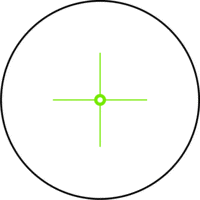Counting Patterns Worksheets
When we are looking for trends in data and trying to understand the behavior that can be modelled by the data series, we often start by attempting to recognize a counting pattern. This is because it is a primitive form of behavior, but it often easier to detect than a series that involves multiple operations or the use of exponents. These worksheets and lessons explore patterns that are based on counting and not operations. We will help you become more comfortable we spotting this type trend within a data set.
Aligned Standard: 4.OA.C.5
- Find the Next Three Step-by-Step Lesson- A simple prime pattern for you to start off with.
- Guided Lesson - Random skips in patterns we cycle through a number of different types of patterns.
- Guided Lesson Explanation - Start to look at the differences between numbers in a set cycle.
- Practice Worksheet - A basic primer for students to blast off with this skill. All eyes on you.
- Matching Worksheet - Match the sequence to the numbers that are missing from it.
- Worksheet Five Pack - This one is neat we ask you where certain numbers would go in long single number patterns.
- Answer Keys - These are for all the unlocked materials above.
Homework Sheets
We removed parts of the sequences in three different easy: Consecutive (Easy), Removing Numbers From All Parts, Large Sequences with Only a Few Numbers (Hard).
- Consecutive Homework 1 - When breaking down patterns, the first step is always to determine the differences between the numbers that you are provided with.
- Mixed Homework 2 - With this we look for a constant number that would increase the value since we are counting up.
- Large Gaps Homework 3 - Where would 17 and 22 go?
Practice Worksheets
Read each question thoroughly. A lot of students miss the most important parts of this series.
- Practice 1 - Complete the next 5 pieces of the pattern.
- Practice 2 - We can try many values and we find that counting by 4s fits this pattern.
- Practice 3 - Fill in the missing parts of the pattern below.
Math Skill Quizzes
You find varied gaps in the sequences presented here. Some might throw you for a loop.
- Quiz 1 - Complete the next pieces of the patterns. There are somewhere between 3 to 6 missing pieces of data. They are all at the tail end of the pattern.
- Quiz 2 - What is missing? This is moderately more difficult because sections are missing in the middle and different segments through the series.
- Hard Quiz 3 - Place the numbers in the correct spot. You will need to step back and breathe this one in before you begin.
How to Spot Math Patterns That Are Based on Counting

Mathematical patterns are difficult to crack. They consume time and energy, and it can take a whole lot of effort to identify the consistency of the pattern. Having said that, patterns are not limited or restricted to one form of parameter or how it can present itself. There are numerous mathematical patterns that revolve around mathematical operations. So, as we climb up the ladder in mathematics, we are faced with mathematical patterns that are difficult to spot. Longer data sets provide you with a greater level of consistency, so they usually make easier to find those trends than shorter data sets. However, following a few tips you can greatly enhance your chance to spot a counting mathematical pattern.
While counting may seem like a simple way to spot a pattern, it often involves the understanding of the basic premise that is focused within the data set. To identify a counting pattern there are many different things that you should consider right away. Start by knowing the sequence of the numbers. Not just the facts, take a step back and breathe in the data. Does it make you feel anything? Do you feel the sense of an elevation or a fall? Do you the values raise to the ceiling or fall through the floor? You can do this simply by finding the difference of item found within the data series. If you are still stuck find if the total values increase or decrease this can give a set idea of where you stand. Eventually you will find out the series of the number and if there are any missing numbers, you can find them too.
Besides basic constant changes in values like consistent increases or decreases it is important to note that counting can happen in both directions forwards and in reverse. Have you ever played a board game where you roll the dice and move ahead a fixed number of spaces, once there you are instructed to move back a few steps? This can happen in patterns as well such as a fixed number forward and then another value backwards. You can uncover this type of behavior or trend in data sets by labelling the differences and writing equations that may have been used to recreate that scenario.